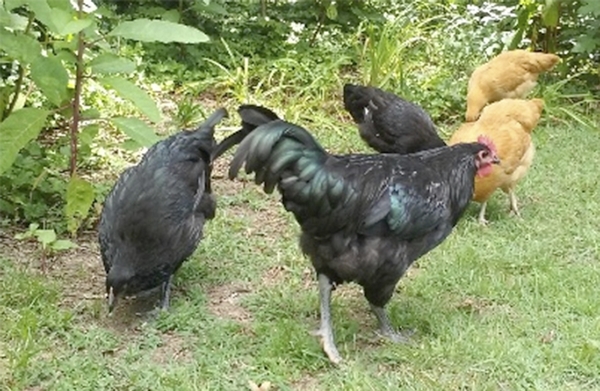Chicken pickin’: What breed is right for you?
Published 12:00 am Friday, July 29, 2016

- Cooperative Extension Chickens come in many colors and sizes. Keep that in mind when selecting what you want.
By Morgan Watts
Rowan Cooperative Extension
A few weeks ago, I wrote about what you needed to do for your backyard poultry in this extreme heat. This week, I am going to take it a few steps back and discuss the different types and breeds of chickens available so you will know what will work best for you, your environment or needs.
The first thing you should take into consideration is whether you want laying chickens, meat chickens, a combination or just a hobby breed. Once you figure that out, you will have a good place to start.
If you decide that you want a laying breed of chicken, you need to also figure out what color eggs you want: white, brown or colored? If you are leaning towards colored eggs, some of the more common breeds of colored egg layers are the Araucanas or the Ameraucanas.
Keep in mind that if you are purchasing from a hatchery, occasionally the chickens that lay colored eggs might just be labeled as Easter eggers. They are normally just a smaller mix breed, but they still produce those amazing enormous colored eggs.
If you want to stick to a brown egg layer, there are a ton of options. I can’t suggest one breed over the other, as they are all great. It just depends on your personal preference. Brown egg layers are generally a bigger, heavier bird, and they normally perform better in colder climates or during winter months. Some popular breeds are Rhode Island, Buff Orpingtons, Barred Rock, Dominique and Golden Comets.
Most of the time, people want to stick with a colored or brown egg layer but if you decide that you want a white egg layer, the most common one found around this area is the White Leghorn. The white egg layers are a smaller bird that will perform better in the summer or hot climate.
From a meat bird stand point, you are more limited on the type of birds. Most people use a Cornish or a Cornish Rock cross. These birds have the ability to be ready to eat in about eight to nine weeks. Sometimes, people choose to raise a heavier laying breed for meat but they can take over six months to be ready.
Lastly, if you are just looking for hobby breeds that you don’t plan on eating and you don’t care about the size of eggs laid or continuous laying ability during climate change, there are a ton of options for you. Not only do they come in all different colors, but they also come in a variety of sizes.
You may choose to get a bantam breed, which is a smaller bird, or a standard breed, which would be your larger birds. There are also options for feathers on its feet or one that is clean legged. From a color standpoint, you can get black, white, red, blue, green or brown. You can even get some that have all different colors.
In the end, what you want all comes down to personal preference. There are plenty of breeds to choose from, depending on your goals and needs.
If you have any questions about these breeds of chickens or what might work best for your environment or needs, call Morgan Watts, Rowan County Livestock Extension Agent, at 704-216-8970, or stop the Extension office located at 2727-A Old Concord Road.




